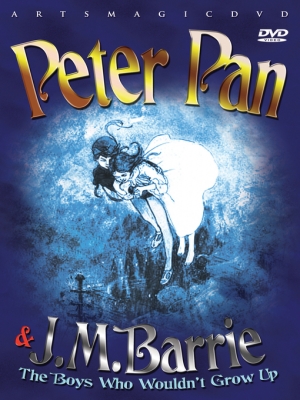
On December 27th 1904, a new play for children opened in London. It was J.M. Barrie’s Peter Pan, the boy from Never Never Land who wouldn’t grow up, together with Wendy, the Lost Boys and the evil Captain Hook. It became the most famous play ever written for children.
The play’s title character is a boy who does not grow up. He lives on the island of Never Land where he is the leader of a group of other boys known as the Lost Boys. He is able to fly and has many adventures. Peter Pan often flies to London. He stops outside the window of the bedroom that Wendy Darling shares with her younger brothers John and Michael to listen to the stories that their mother tells them. He goes inside their bedroom one evening and leaves his shadow behind. When Peter returns to retrieve the shadow, he accidentally wakes up Wendy. When Wendy tells Peter Pan that she knows lots of stories, he asks her to come back to Never Land with him. She agrees to go on the condition that her brothers can go with her. As well as Peter Pan and the Lost Boys, Never Land is home to fairies, mermaids, a tribe of Native Americans led by the chief Great Big Little Panther and his daughter Tiger Lily, wild animals and a pirate crew led by the fearsome Captain Hook. In Never Land, Wendy acts as mother to the Lost Boys, Peter Pan and her own brothers John and Michael. Wendy, John and Michael live happily in Never Land for some time. When Peter Pan leads them to believe that their parents have forgotten about them, however, Wendy, John and Michael decide that it is time to return home.
Many people are likely to be offended by the manner in which Native Americans are depicted in Peter Pan, or The Boy Who Wouldn’t Grow Up as J.M. Barrie originally wrote it. The Native American characters are referred to as “Redskins” and “Piccaninnies”. They communicate with each other in grunts and pidgin English and call Peter Pan the “Great White Father”. In modern productions of the play, especially ones in North America, steps may be taken to avoid presenting characters who are racist stereotypes. For example, when the British director Tim Carroll staged the play in Stratford, Ontario, Canada in 2010, he chose to change Tiger Lily’s tribe into a tribe of Amazons, the warrior women from Greek mythology.
Credit : Literature Wiki
Picture Credit : Google




